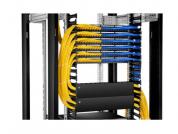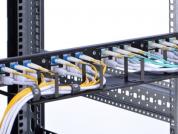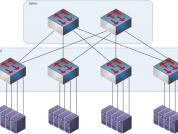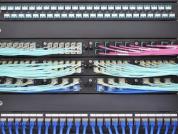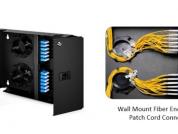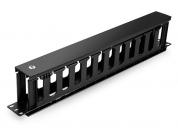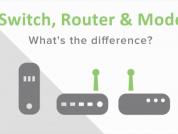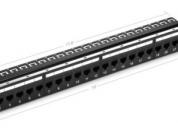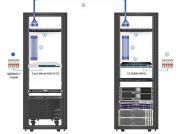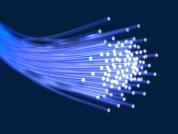|
With the network cabling environment becoming more and more complex, there is a growing need to terminate fiber optic cables in an efficient and faster manner. Apart from fiber connectors, fiber optic pigtails also can offer a quick way to achieve this goal. Today, this post will introduce the basics and common types of fiber optic pigtail for your reference during pigtail selection. What Is Fiber Optic Pigtail?
Fiber optic pigtail, sometimes also called bare fiber, is a piece of optical cable terminated with optic connectors at only one side while leaving the other side no connectors. So the side with connector can link to the equipment (eg. optical transceiver or fiber converter module) and the other side can be melted with fiber optic cables. Besides, fiber optic pigtail have a similar structure with fiber optic patch cords which are terminated with connectors on both ends. Sometimes, technicians may need to cut down the fiber optic patch cords in the middle to get two fiber pigtails. Fiber optic pigtails are usually used with fiber optic management equipment like ODF (optical distribution frame), splice closures and cross cabinets. Selecting Guidance
Fiber optic pigtails are designed to meet or exceed all of the performance requirements for current and proposed applications. They are available in various types, and which type is suitable for your network? Here is a simple selection guide. According to the Fiber Connector
As we all know, there are a number of fiber connectors. Therefore, according to fiber connector, fiber optic pigtail also can be divided into various types. LC fiber optic pigtail—as its name shows, this pigtail uses the LC connector. The LC connector is one of the most well known and used optical connector types in the world nowadays. It features low cost and high precision 1.25mm outer diameter ceramic ferrules. And LC fiber optic pigtails are suitable for high-density installations. What’s more, Fiberstore offers a new type of optical pigtail—keyed LC pigtail. This pigtail has different colors and can only be connected with the same colored adapter, which offers mechanical network security for organizations that want to segregate networks due to privacy or security concerns. FC fiber optic pigtail—the pigtail use the metallic body FC optic connectors. And it’s well known that FC connectors feature the screw type structure and high precision ceramic ferrules. FC fiber optic pigtails and its related products are widely applied for the general and average applications. MTRJ fiber optic pigtail—this pigtail use the MTRJ connectors that are specially designed for fast Ethernet. And MTRJ fiber optic pigtail connectors are all duplex types with a mini ribbon fiber inside. They have the features of the MT and RJ45 connectors. MTRJ optical fiber pigtails are small form connector products that fit for density applications. Of course, except for the fiber optic pigtails mentioned above, there are other types of optical pigtails such as SC, ST, MU and E2000 fiber optic pigtails which also play a vital role in optical communication. According to the Application Environment
Generally speaking, whether natural or manmade, cataclysmic or catastrophic, rugged and unforgiving environments need the use of high-performance fiber optic cables. So does fiber optic pigtails. Here are two commonly used pigtails which perform well in harsh environment. Armored Pigtail
During some fiber optic installations, there is a need to provide extra protection for the cable due to the installation environment. Enclosed with stainless steel tube or other strong steel inside the outer jacket, armored fiber optic pigtails could provide extra protection for the optical fiber and added reliability for the network and reduce the unnecessary damage due to rodents, construction work, weight of other cables and other factors. Waterproof Pigtail
Waterproof pigtail is designed with a stainless steel strengthened waterproof unit and armored outdoor PE (Poly Ethylene) jacket for further protection. With this special structure, it can be used in harsh environments like communication towers, CATV and military. Waterproof pigtail has good toughness, tensile and reliable performance. It is mainly deployed in outdoor connection of the fiber optical transmitter. Conclusion
Fiber optic pigtails can be divided into different types according to different criteria. As a professional fiber optic components supplier, FS.COM provides various kinds of fiber optic pigtails with different fiber counts such as simplex, duplex, 4 fibers, 6 fibers, 8 fibers, 12 fibers, 24 fibers, 48 fibers and so on. All of these fiber pigtails can provide an easy and fast way for your fiber terminations. If you have any question, please kindly contact sales@fs.com. From:http://www.chinacablesbuy.com/fiber-optic-pigtail-selection-guide.html |
FIBER OPTIC PIGTAIL SELECTION GUIDE
Related article
When looking at the title, especially the words “Rack Mount Patch Panel”, will you hesitate for a moment? Yes, I do. I am thinking what the blood tie does it have with a patch panel and whether it needs to be installed differently.
High-density cabling in data centers is increasingly tied to the server rack. Because server racks make it easy to manage cabling systems and protect fibers from external mechanical damage.
At present, with the massive increase in data transmitting and the need for real time data travel within the network, Ethernet switching technology has evolved greatly over the last decade.
With the increasing demand for computing power and space in the data center, server cabinet, network cabinet, server rack and network rack are often used to hold networking hardware and assemblies in data center.
Patch panel, an indispensable cable managing device, has been divided into wall mount patch panel and rack mount patch panel for different applications. Therefore, in this time we will continue to explore the other branch of patch panel: wall mount patch panel.
Efficient cable management has been an indispensable aid for the cable organization, no matter it is vertical cable management or horizontal cable management. Owing to the more and more complicated network, a well-managed cabling has been a pressing job for most network installers and IT technicians.
What is the key difference of switch vs router vs modem? How switch vs router vs modem each functions in a network. We would address these issues in this article by explaining switch vs router vs modem from scratch.
There are many Ethernet patch panel types available on the market. According to different cable types, there are different patch panels, such as the cat6 patch panel and cat6a patch panel. Then what’s cat6 and cat6a patch panel? Will Cat6 patch panel work with Cat6a cable?
SFP ports and RJ45 ports are the most common interfaces which are used in Gigabit Ethernet applications. How much do you know about SFP ports and RJ45 ports? And do you know how to convert SFP to Ethernet? This article will explain these questions.

